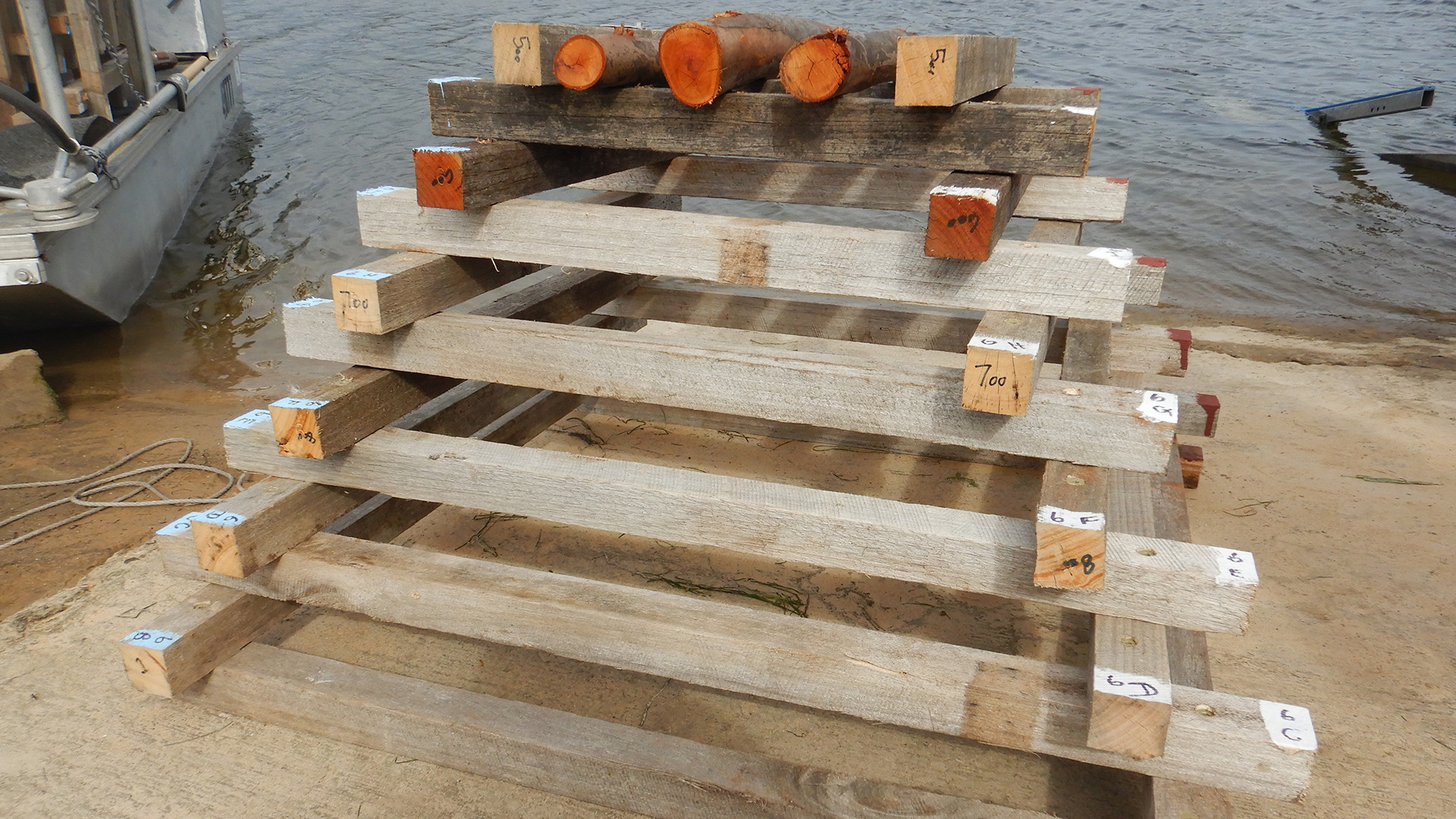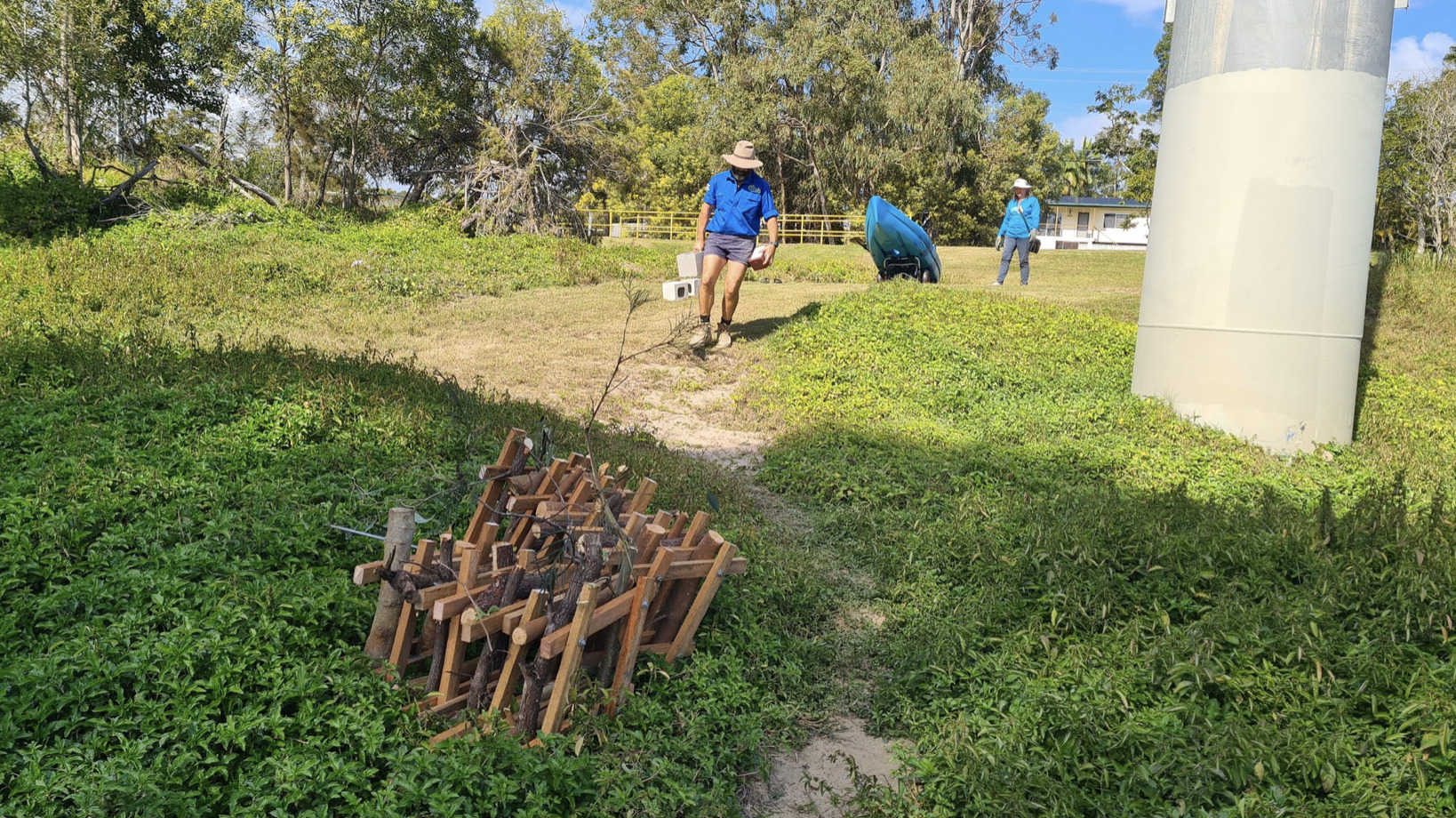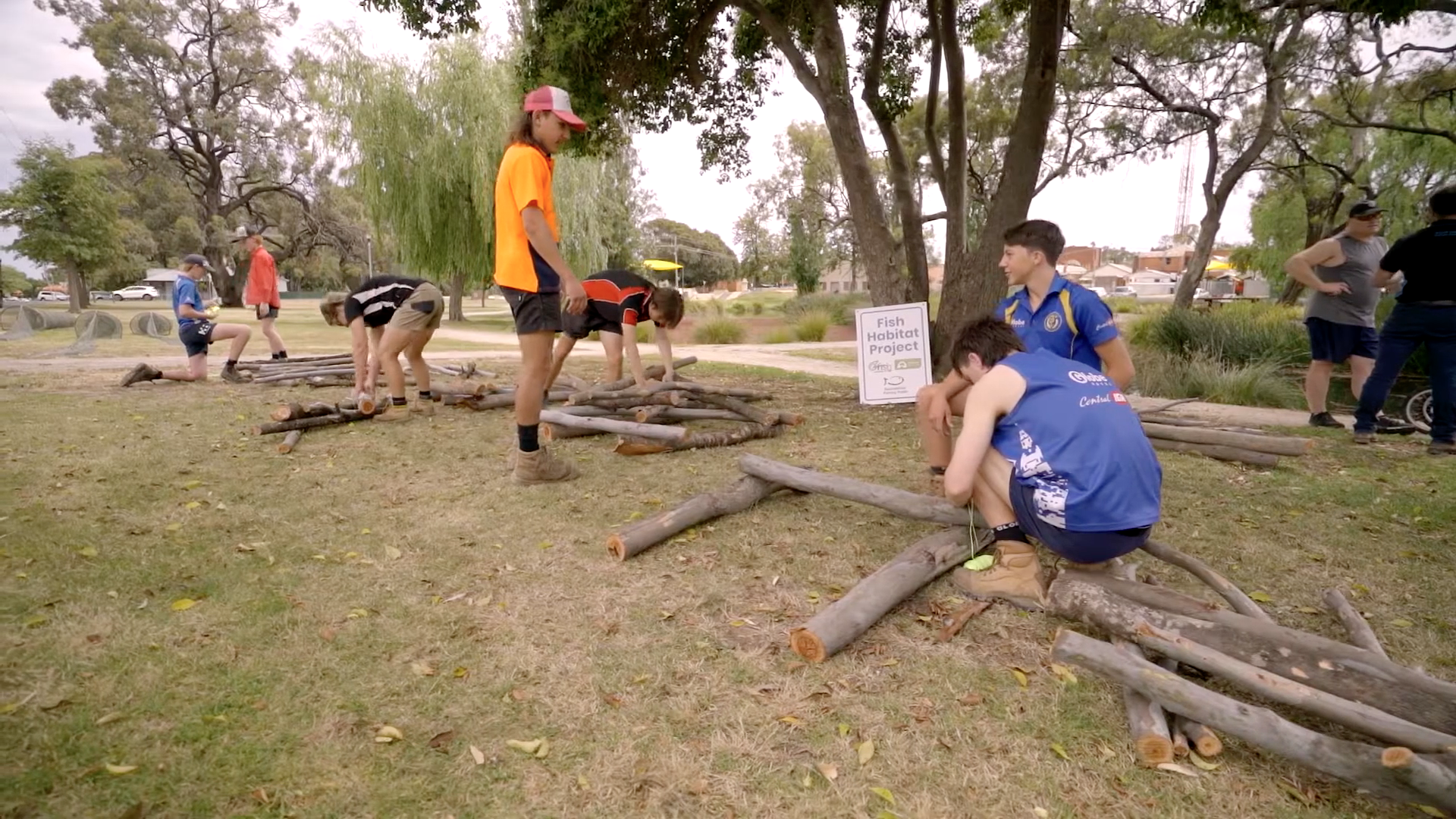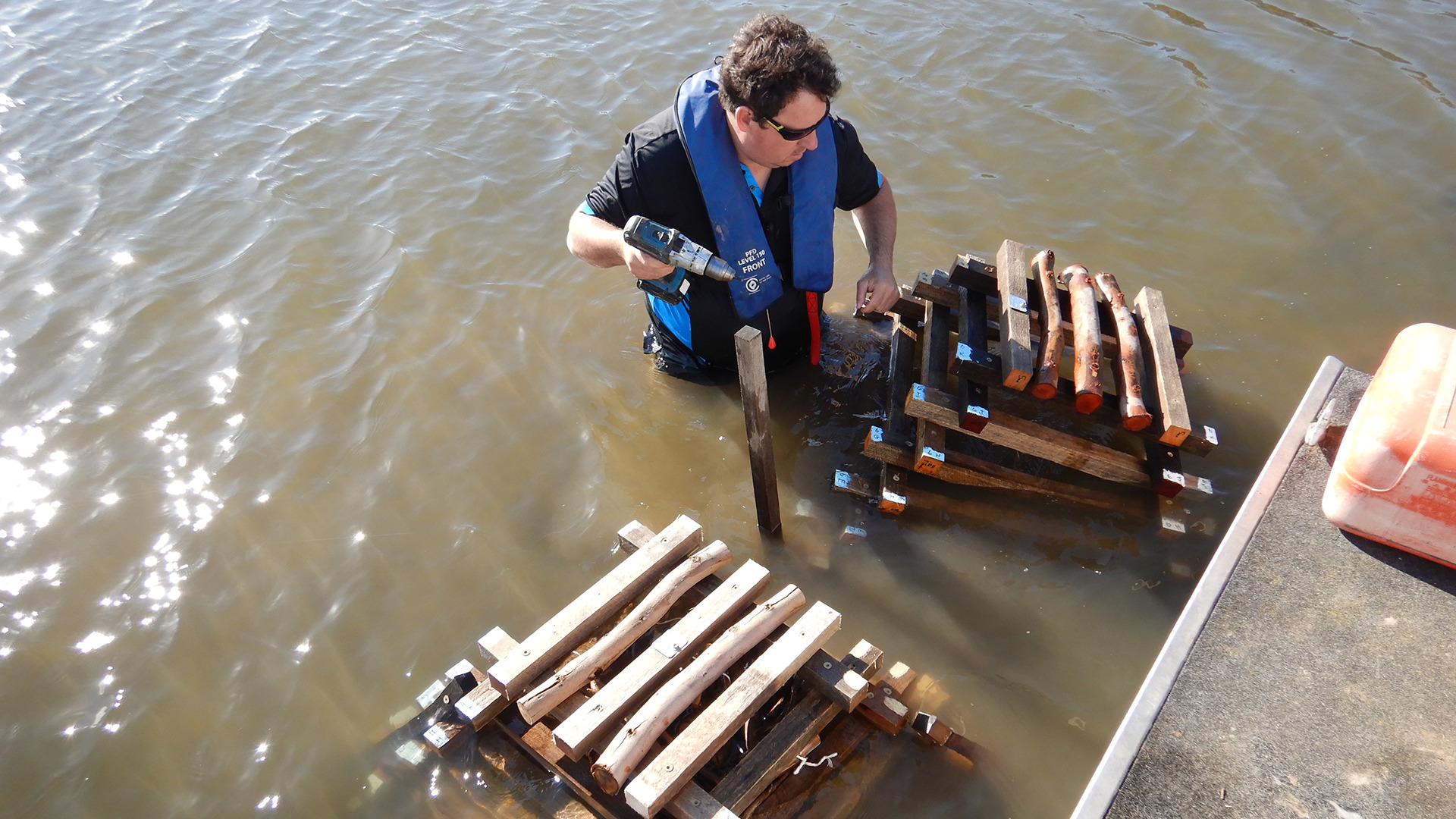What are fish hotels?
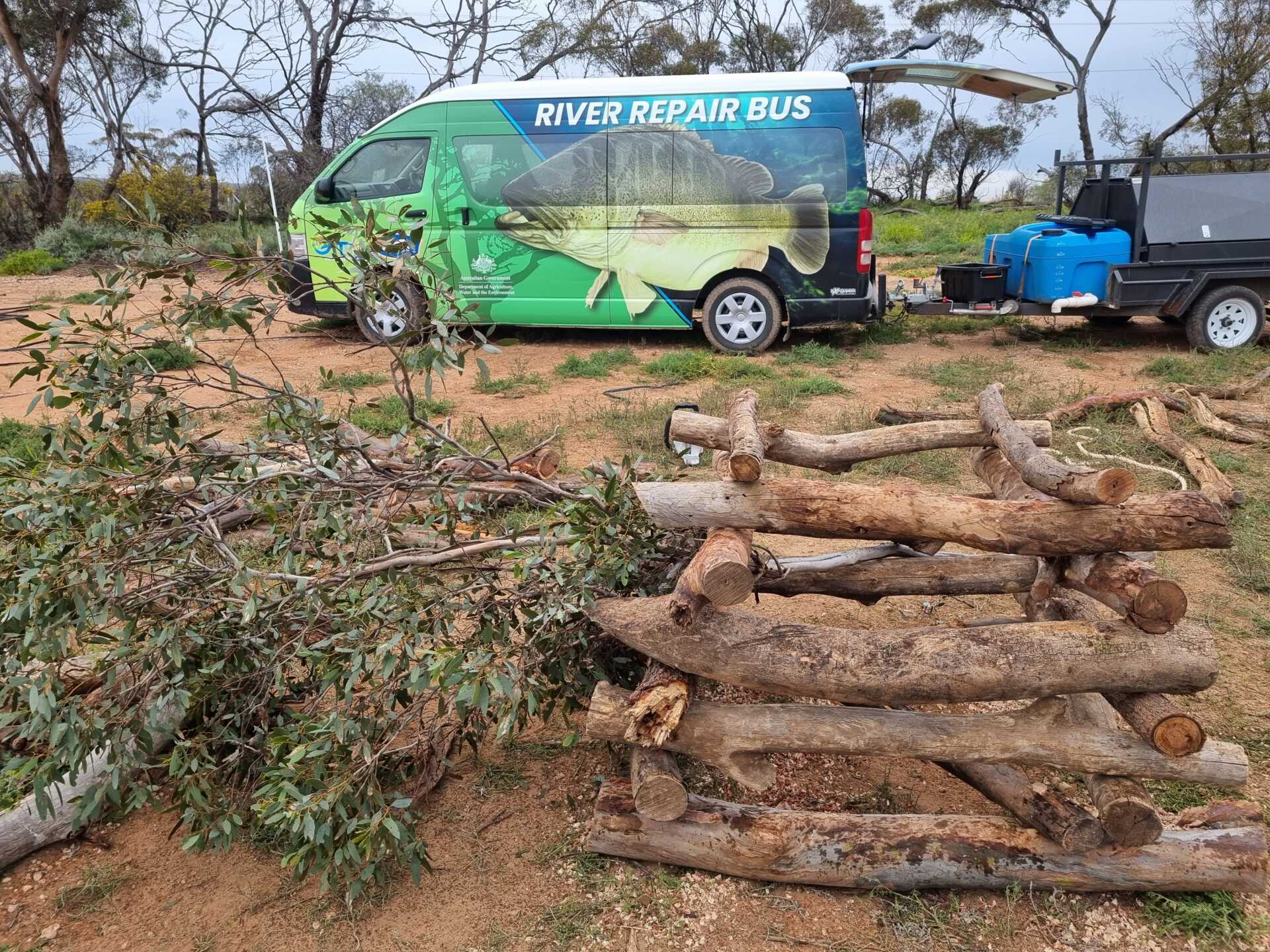
We have all stayed in a hotel, right? What about a fish hotel? It’s basically the same thing except there is no check-out time, it’s designed for native fish, and it’s one of our flagship innovative projects here at OzFish.
For the last six years, we have been working hard to re-snag our inland rivers and creeks with carefully constructed fish habitats, all in a bid to re-establish habitat lost during the last 100 years. With more and more of these structures going in, we thought it was time to dive into the detail of fish hotels, what makes them different, and why they are so important.
How are they made?
Fish hotels are an innovatively designed wooden construction, that look a bit like a hashtag (#). They consist of criss-crossed wooden beams placed on top of a cement base, to create a complex system of habitat that sits on the riverbed. Made from natural materials, they are environmentally friendly and a perfect location for native fish to inhabit. They are called fish hotels as the fish only stay for short periods of time before growing stronger and moving downstream.
Why do we need these?
Sadly, millions of snags have been deliberately removed from Australia’s waterways through large-scale desnagging operations over many years. Snags were removed from rivers as it was thought they had a negative impact on the waterway. Some of the misconceptions were that snags reduced the capacity of rivers during flooding, increased erosion, hindered watercraft navigation, and reduced the efficiency of water delivery.
This had a negative impact on native fish and populations are now at an all-time low.
The theories about snags were later proven incorrect and now it is important that we reverse the loss of this vital habitat by restoring woody structures to waterways across the country.
A range of work can be done to reverse this trend, including fish hotels. Unlike fallen trees and larger wooden snags which might see a native fish bunker down for the majority of its time, a fish hotel is only a temporary habitat for smaller-bodied fish.
Throughout the juvenile stages of a fish’s life, a complex construction like these (pictured below) can be vital.
These habitats are important for native fish as it gives them shelter and protection, a place to breed, a place to rest, and ambush sites. They also provide feeding grounds for fish that eat algae and macro-invertebrates. These structures also positively impact the river system by creating variability in depth and flow.
We are delivering a range of habitat restoration projects, that include fish hotels, across Australia. Check out some of what our recreational fishing volunteers are achieving when it comes to resnagging and fish hotels. You can get involved too – if you want to help make a positive difference, get in contact with our team today.
Logan River Fish Hotels for Aussie Bass
The freshwater fish in the Logan River have a lot to complain about. They have to put up with invasive species, lack of habitat and diminished water quality. That’s why we are giving them a boost by installing fish hotels.
These no-fuss habitat constructions are on their way to support Aussie bass in a scrubby creek just off the Logan river. This is all thanks to the Logan Albert River Fish Habitat Restoration Project, funded by Healthy Land & Water through the National Landcare Program. The site was selected by project partners – Logan City Councill.
Sunraysia Fish Hotels for threatened small-bodied fish
The Murray Hardheads is one of Australia’s most threatened fish and it calls some of the wetlands within Sunraysia home. This small-bodied native fish has faced a diverse range of threats, including reduced habitat, drought, and competition with pest species.
To combat this problem, we are working alongside our volunteers, the Sunraysia Institute of Tafe and First Peoples of Millewa Mallee Aboriginal Corporation to build 60 specific fish motels.
The fish motels are held together by wood and natural rope, which means they are 100% environmentally friendly. This makes the process slightly longer to build but will provide lasting benefits. After construction, the fish motels will be installed by recreational fisho’s and the River Repair Bus in deeper sections of lagoons surrounding the Sunraysia region.
The project is proudly supported by the ERF – Threatened Species Strategy Action Plan – Priority Species Grants opportunity. The objective of the Threatened Species Strategy Action Plan – Priority Species grant opportunity is to support on-ground activities that will assist efforts to improve the trajectories of priority species.
Fish Castles in Victoria
Working with local businesses and local recreational fishos in Gippsland and across Victoria, we have been restoring habitat in Lake King to provide fish and shellfish with environmentally friendly fish hotels. While using a slightly different construction method to the wooden fish hotels used in our inland rivers, these deliver the same important benefits. Using recycled scallop shells, donated through the Nature Conservancy’s ‘Shuck Don’t Chuck’ program, volunteers have been creating habitat structures that will provide native fish with an important source of shelter and food.
The project is supported by the recreational fishing community and funded by the VFA Recreational Fishing Licence Trust Fund and BCF – Boating, Camping, Fishing. Once completed the project will see 250 fish castles installed in Lake King.
The shells are collected from local fisheries, restaurants, and businesses in Melbourne, then cured for a minimum of six months to ensure they don’t introduce contaminants to the waterway.
Once deployed into Lake King, near the mouth of the mighty Tambo River, the fish castles help to create complex habitat for native fish populations, like the black bream, that the lakes are so famous for. The natural shells not only help to attract new shellfish growth, such as mussels, but also provide a home for the small creatures, like shrimp and crabs, that help to form the bottom of the food chain.
Deni Lagoons Fish Hotels
The Deniliquin Lagoons project is a community partnership project that has been running since 2010. The lagoons were severely degraded with erosion and overrun by introduced plants and carp. Over the past 12 years, local volunteers have been hard at work removing pest species, establishing an endangered fish refuge area and a recreational fishing park by replanting native wetland plants and installing habitat homes for native fish.
More recently, we have erected fish hotels as a way of providing increased habitat to these struggling fish (pictured below).
We have worked together to improve the habitat for threatened Southern pygmy perch and eel-tailed catfish, commonly known as freshwater catfish. The lagoons are known to be one of the only places in Australia where you can see freshwater catfish nesting with their young!
This project was made possible thanks to the OzFish-Landcare NSW partnership with funding support from the NSW Recreational Fishing Trusts, the Tate Endowment Fund, and BCF, and the support of Edward River Council and Forestry Corporation of NSW.
Fish hotels in the Onkaparinga Estuary
The OzFish volunteer team designed and built a new kind of modular wooden structure, called ‘frustas’ because of their stepped pyramid shape. Constructed from recycled oak tree stakes and filled with bundles of eucalyptus sticks, the frustas were placed at strategic points along the river. So far, nine frustas have been installed.
The reintroduction of these safe places for fish is vitally important to support native species and ensure the long-term sustainability of the Onkaparinga River as a popular fishing spot. Over the years, submerged wood has been systematically removed from the river, for a variety of reasons, resulting in habitat degradation.
The frustas, with their flat tops that sit below the water’s surface, are also proving popular with birds as places to roost at low tide. Species including cormorants, black ducks, and ibis have been seen making use of them.
Moree Fish Hotels and The River Repair Bus
Wetlands and off-channel creek systems are among the most productive environments within the Murray Darling Basin. They provide essential breeding and foraging habitats for various aquatic species through heightened survival and feeding opportunities.
Garwuul or Whittaker’s Lagoon is an important cultural waterway near Moree, NSW.
Combining informative talks, fishing, and hands-on lagoon restoration activities OzFish has engaged the local indigenous and broader community in this important part of local ‘country’.
OzFish are working alongside Flat track Moree to build 16 woody fish motels, once the fish motels have been built, they will be transported to Whitaker’s lagoon and installed alongside the Moree River Repair Bus local volunteers.

